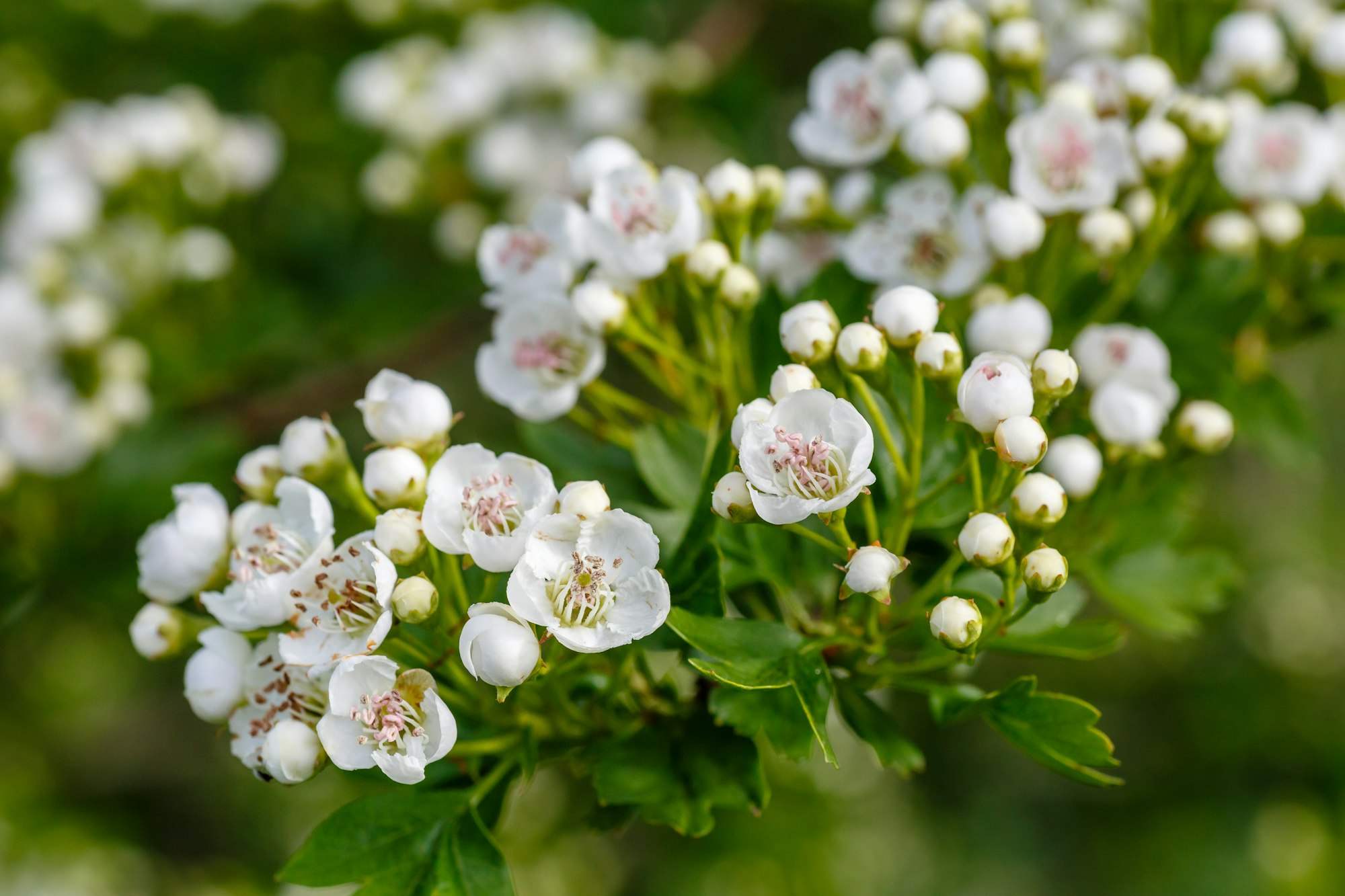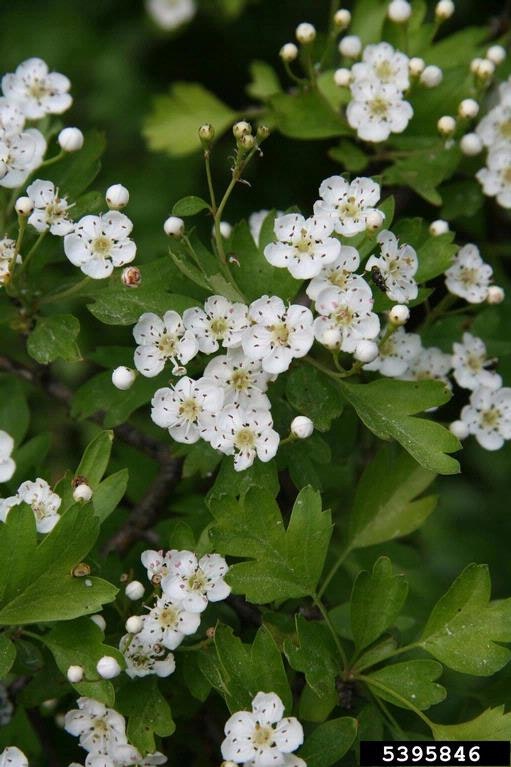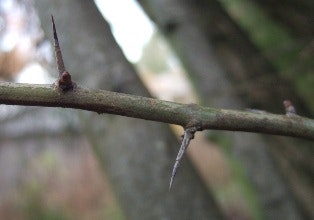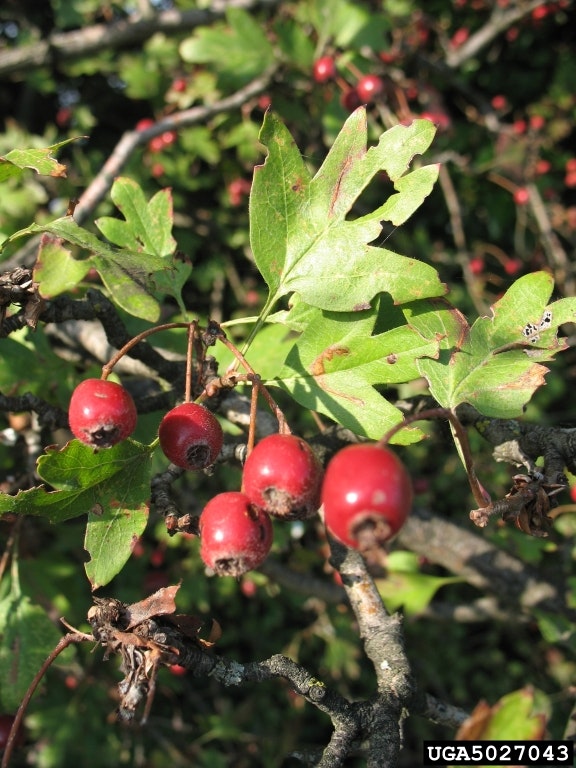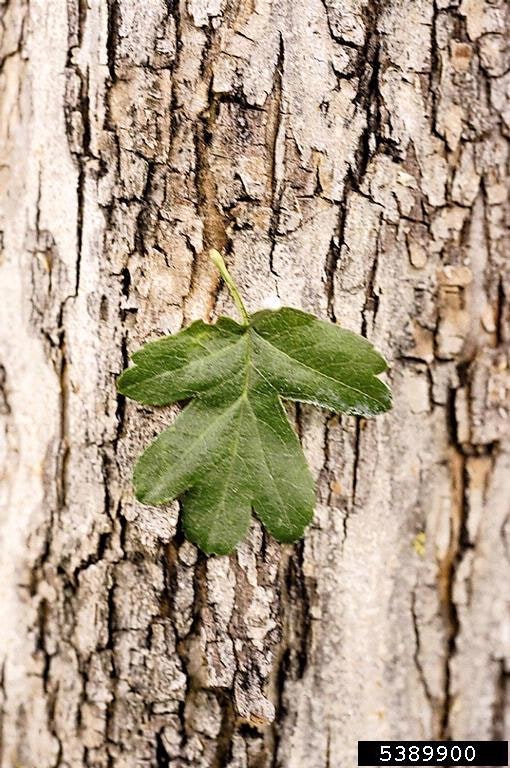ENGLISH HAWTHORN
(Crataegus monogyna Jacq)
Other common names: common hawthorn, single-seed hawthorn, one-seed hawthorn, Mayblossom
Weed Class/Rating: Though technically C. monogyna is naturalized in Oregon, it can be invasive since it is a prolific seed producer and can form dense thickets that exclude all understory plants. ODA lists this plant as a potential “B” noxious weed, “A weed of economic importance which is regionally abundant, but may have limited distribution in some counties”
Family: Rosaceae (rose)
Lifecycle: Perennial
Height: 10-30 feet tall
Branches: Have many stout spines and their bark is smooth, pale, and gray
Leaves: Alternate, leathery, and deeply lobed.
Flowers: Grow in clusters of 10 – 20, are white with a pink tint, and have 5 petals. Blooms in May.
Other notes: The plant also has clusters of single-seeded red berries. Seeds are widely dispersed by birds.
Description: English hawthorn is a broadly spreading shrub or small tree growing up to 25’ tall. The trunk has pale, gray smooth bark, and younger stems bear sharp thorns making the plant useful for natural fence plantings in pastures. The leaves are 1-2 inches long and deeply lobed, sometimes almost to the midrib, with the lobes spreading out like a bird's foot. Flowers are produced in showy white clumps from late spring to early summer in clumps of 5-25 blossoms; each flower is about 1 cm in diameter. Pollinated flowers produce a haw, which is a small, oval, dark red fruit about 1 cm long, berry-like, but structurally a pome containing a single seed.
Impacts: The impacts of English hawthorn are experienced in oak forest restoration projects. Dense stands of hawthorn inhabit thousands of acres of white oak habitat and must be removed to allow for the continued survival of oak trees.
Biological controls: Biological control is not available for English hawthorn.
